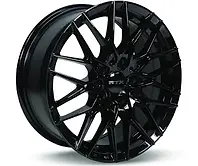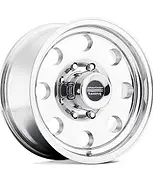Upgrading your car’s rims is one of the most effective ways to enhance both performance and aesthetics. However, selecting the right rims involves more than just picking a design that catches your eye. The best rims for your vehicle depend on a variety of factors, including fitment, material, driving style, and budget. Here’s what you should consider when choosing rims for your car.



1. Know Your Vehicle Specifications
Before exploring rim styles, start with the basics:
-
Bolt Pattern: The bolt pattern (e.g., 5x114.3) determines how the wheel mounts to the hub. It must match your vehicle’s specifications.
-
Wheel Size: Understand your vehicle’s OEM (original equipment manufacturer) wheel size. This includes diameter, width, and offset.
-
Offset and Backspacing: Offset affects how far the wheel sits in or out of the fender. The wrong offset can affect handling and cause rubbing issues.
-
Load Rating: Ensure the rims can handle your vehicle’s weight, especially for SUVs or trucks.
2. Choose the Right Material
Rims are typically made from steel or alloy (aluminum or magnesium-based):
-
Steel Rims: Durable and affordable, ideal for winter or rough driving conditions, but heavier and less stylish.
-
Alloy Rims: Lightweight, better performance, and stylish finishes. They improve acceleration, braking, and fuel efficiency.
For performance vehicles, forged aluminum rims offer the highest strength-to-weight ratio but come at a premium price.
3. Consider Your Driving Style
Your driving habits should influence your choice:
-
Daily Commuting: Opt for durable, mid-range alloy wheels with a comfortable ride profile.
-
Performance Driving: Look for lightweight forged or flow-formed rims for improved handling and heat dissipation.
-
Off-Road Use: Choose rugged, impact-resistant wheels with beadlock options if needed.
4. Aesthetic Appeal
Rims play a major role in your car’s appearance. Consider:
-
Design: Multi-spoke, mesh, concave, deep-dish, or minimalist – the right design complements your vehicle’s style.
-
Finish: Chrome, matte black, gunmetal, polished, or custom-painted – pick one that matches your vehicle’s color and personality.
-
Size Upgrade: Upsizing (e.g., from 17” to 19”) can enhance looks but may affect ride comfort and speedometer calibration.
5. Set a Realistic Budget
Prices vary widely depending on brand, size, and material. Establish a budget before shopping, and remember to factor in:
-
Tires (if changing rim size)
-
Installation costs
-
Wheel alignment
-
TPMS (Tire Pressure Monitoring System) compatibility
While it’s tempting to go all-in on aesthetics, prioritize safety and quality first.
6. Buy from Reputable Sources
Purchase from established brands or trusted retailers that offer warranties and proper certifications (e.g., JWL, VIA, TUV). Beware of counterfeit wheels that may not meet safety standards.
Final Thoughts
Choosing the best rims for your car involves balancing performance, aesthetics, and compatibility. By understanding your vehicle's requirements and driving needs, you can make a smart investment that enhances your car’s style and functionality. Whether you're going for a sleek street look or rugged performance, the right set of rims makes all the difference.

